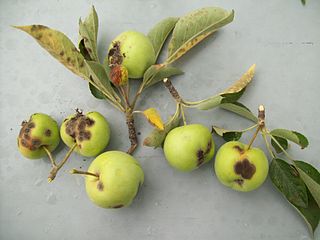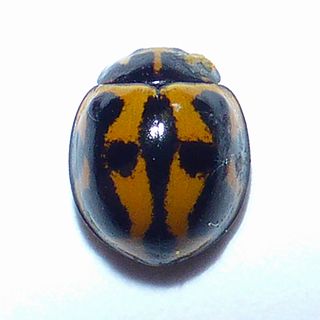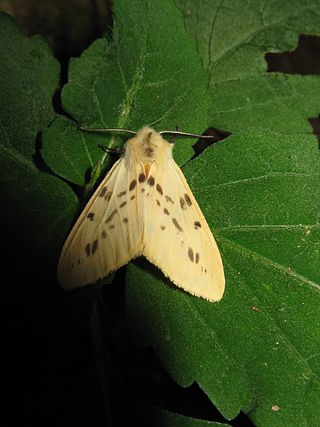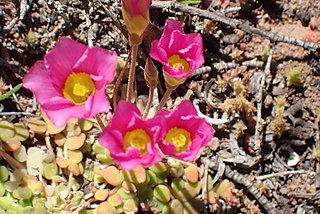
Apple scab is a common disease of plants in the rose family (Rosaceae) that is caused by the ascomycete fungus Venturia inaequalis. While this disease affects several plant genera, including Sorbus, Cotoneaster, and Pyrus, it is most commonly associated with the infection of Malus trees, including species of flowering crabapple, as well as cultivated apple. The first symptoms of this disease are found in the foliage, blossoms, and developing fruits of affected trees, which develop dark, irregularly-shaped lesions upon infection. Although apple scab rarely kills its host, infection typically leads to fruit deformation and premature leaf and fruit drop, which enhance the susceptibility of the host plant to abiotic stress and secondary infection. The reduction of fruit quality and yield may result in crop losses of up to 70%, posing a significant threat to the profitability of apple producers. To reduce scab-related yield losses, growers often combine preventive practices, including sanitation and resistance breeding, with reactive measures, such as targeted fungicide or biocontrol treatments, to prevent the incidence and spread of apple scab in their crops.

Venturia inaequalis is an ascomycete fungus that causes the apple scab disease.

Lepicerus is a genus of myxophagan beetles containing three described species in the family Lepiceridae; it is the only extant genus in the family, with another genus, Lepiceratus only known from fossils. Extant species occur in the Neotropics, from Mexico south to Venezuela and Ecuador. Fossils referrable to the genus are known from the early Late Cretaceous of Southeast Asia.

Coelophora inaequalis, the variable ladybird, common Australian lady beetle or common Australian ladybug is a ladybird species endemic to Australia, Oceania and Southern Asia. The variable ladybird gets its name from the black markings on the adult elytra, that vary from one individual to another.
Trachelostenus is a genus of beetles belonging to Tenebrionoidea. It is native to the Valdivian forests of Chile, and has at least two species, T. inaequalis (Solier) and T. fascicularis (Philipp). It was historically considered the only member of the family Trachelostenidae, but a 2015 study sunk the genus into the tenebrionid subfamily Tenebrioninae.

Lestes inaequalis is a species of damselfly in the family Lestidae, the spreadwings. This species is known commonly as the elegant spreadwing. It is native to eastern North America, including eastern Canada and the United States.

Lemyra inaequalis is a moth of the family Erebidae first described by Arthur Gardiner Butler in 1879. It is found in Japan and Korea.
Copelatus inaequalis is a species of diving beetle. It is part of the genus Copelatus of the subfamily Copelatinae in the family Dytiscidae. It was described by Sharp in 1882.

Dryopteris inaequalis is an Afrotropical fern species that ranges from tropical and southern Africa to Madagascar. It has been recorded in Tanzania, Zambia, Malawi, Mozambique, Zimbabwe and South Africa, where it is present in the Western Cape, Eastern Cape and KwaZulu-Natal. It is found on forest floors and along forest margins, from middle to high altitudes.
Cyclophora inaequalis is a moth in the family Geometridae. It is found in Zambia.
Phrynidius is a genus of beetles in the family Cerambycidae, containing the following species:
Phrynidius armatus is a species of beetle in the family Cerambycidae. It was described by Linsley in 1933.
Phrynidius asper is a species of beetle in the family Cerambycidae. It was described by Henry Walter Bates in 1885.
Phrynidius echinoides is a species of beetle in the family Cerambycidae. It was described by Breuning in 1940.
Phrynidius echinus is a species of beetle in the family Cerambycidae. It was described by Bates in 1880. It is known from Honduras, Guatemala, and Panama.
Phrynidius salvadorensis is a species of beetle in the family Cerambycidae. It was described by Franz in 1954. It contains two subspecies, P. salvadorensis montecristensis and P. salvadorensis salvadorensis.
Phrynidius singularis is a species of beetle in the family Cerambycidae. It was described by Bates in 1880. It is known from Mexico, Guatemala, and Honduras.
Pomatodelphis is an extinct genus of river dolphin from Middle Miocene marine deposits in Alabama, Florida, Brazil, Germany and France.
Curvularia inaequalis is a plant saprobe that resides in temperate and subtropical environments. It is commonly found in the soils of forage grasses and grains. The species has been observed in a broad distribution of countries including Turkey, France, Canada, The United States, Japan and India. This species is dematiaceous and a hyphomycete.

Oxalis inaequalis is a bulb-forming species of flowering plant in the wood sorrel family. It is native to South Africa's Cape Provinces. Each plant produces a rosette of up to 70 succulent leaves, which occasionally produce aerial bulbs. The flowers are yellow and copper-coloured. The sepals are of unequal sizes, hence the specific epithet "inaequalis", which is Latin for "unequal".







